Software Used on this Project
Project Overview
The Las Vegas High Roller opened in 2014 as the largest observation wheel in the world (it is now the second largest, after the Ain Dubai (Dubai Eye). The High Roller is 550 ft. tall and features a circular rim formed of a single tube supporting 28 spherical cabins. Each cabin can hold up to 40 people, who can partake in several themed entertainment experiences throughout a 30-minute ride. Located in the heart of the infamous Las Vegas strip, the attraction is across the street from Caesars Palace hotel, at the end of the LINQ promenade. It was important to select the appropriate analysis software to design this complex structure. Oasys GSA was chosen as the primary structural analysis software as it allowed Arup Engineers the ability to analyse many unique design considerations.
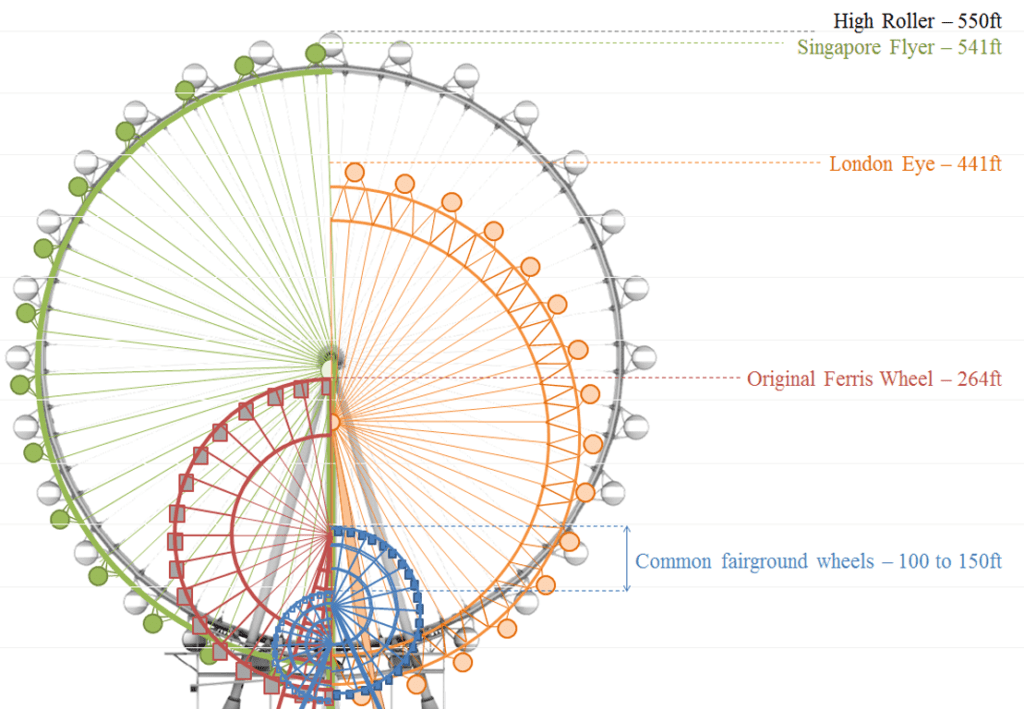
© Arup – observation wheel size comparison.
How Oasys proved invaluable
Oasys GSA allowed the engineers to study various construction sequences to confirm that the wheel could be built. The Vegas High Roller was ultimately constructed in an upright position like that of the Singapore Flyer. The permanent foundations were constructed first, then the support legs and props were erected, followed by the hub of the wheel. The rim was constructed section by section.

© Arup – construction sequence showing key stages.
The immense size of the wheel and the narrow footprint of the site presented challenges for the design team. Foundation location options were limited due to the site constraints between an existing road, a monorail, and an active storm culvert. Ultimately the hub of the wheel was supported using four inclined legs with a single transverse brace founded across the road. GSA was integral in determining the right geometry for the site.
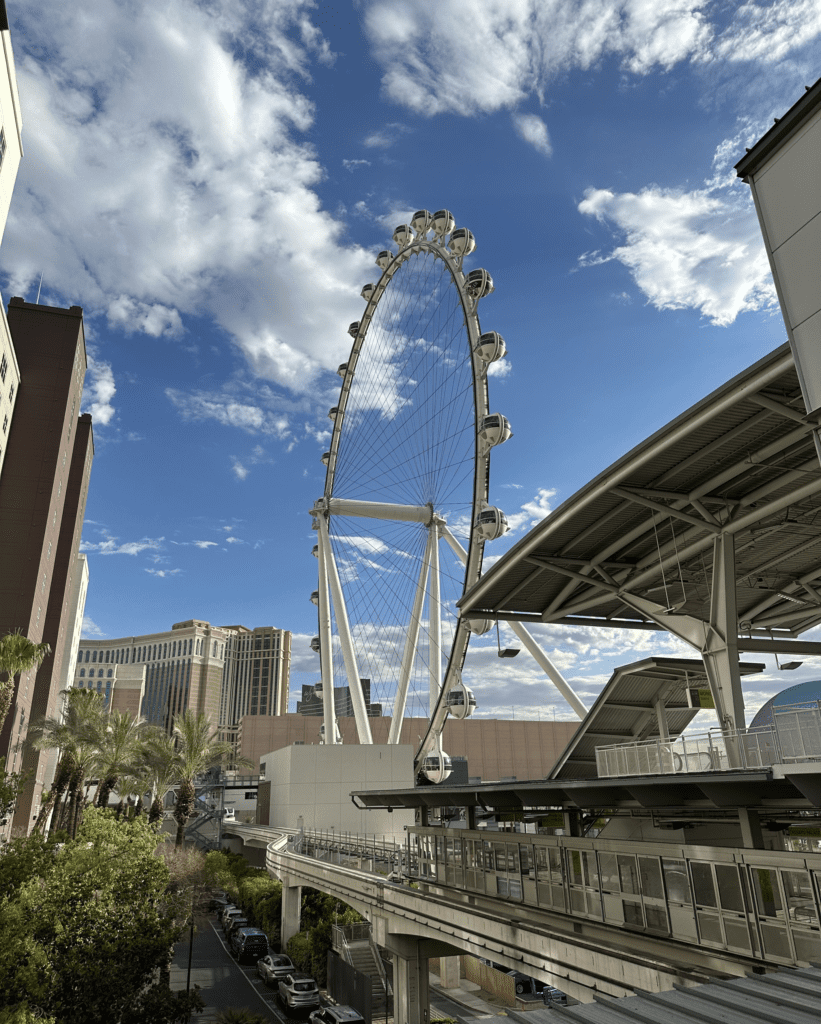
The wheel had many unique design considerations that could only be studied with a software that allowed for custom design cases and atypical geometry.
GSA was used to analyse the different operating conditions, such as when the rim is free to rotate or when it is fixed to the support structure to prevent rotation. The team was able to alter the end fixity of members in different analysis stages (e.g., changing from pinned to fixed) to mimic the real conditions the elements would face.
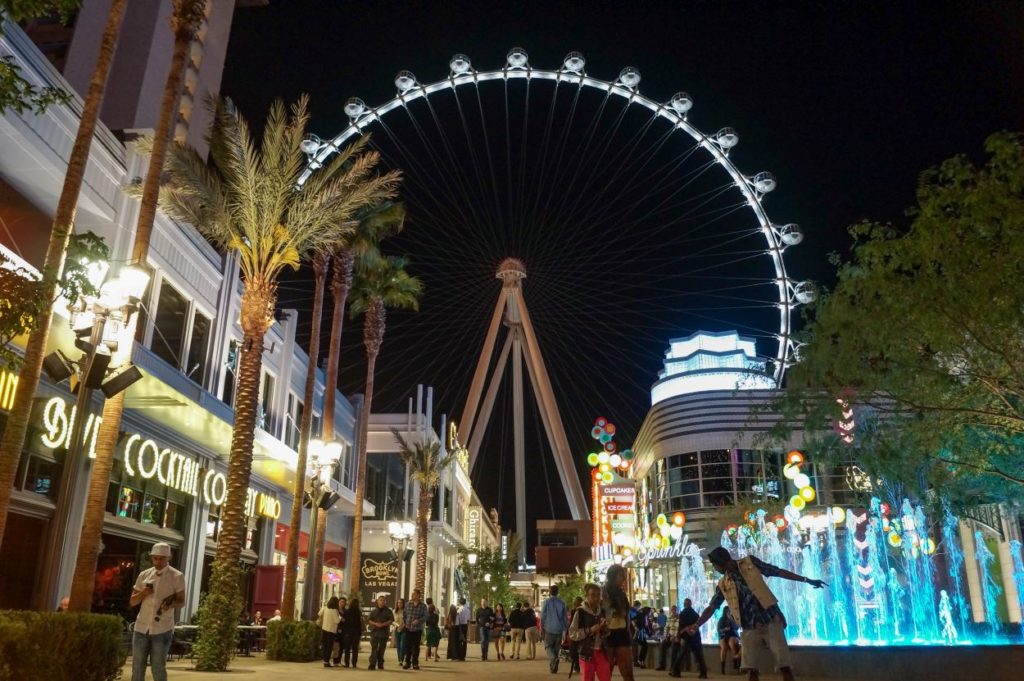
© Arup
The intense climate of the Las Vegas desert meant that thermal loading was significant. With long slender elements, the expansion or contraction of each component greatly affected the design of the wheel.
GSA allowed the design team to understand the dynamic characteristics of the wheel to ensure adequate passenger comfort in wind events. It also facilitated the study of differential settlement between the supporting legs to determine the resulting displacements and stresses within the structure.
GSA analysis determined the flexibility of the wheel and how much the rim could be straightened by adjusting the pretension in individual cables. Along with careful detailing, this analysis allowed for maximum adjustability in the field and helped achieve exceptionally tight construction tolerances. Buckling of the single-element rim and the nonlinearity of the cable tension was also determined using GSA. Using the eigen value buckling method, the engineers were able to identify additional forces and moments generated by buckling modes.
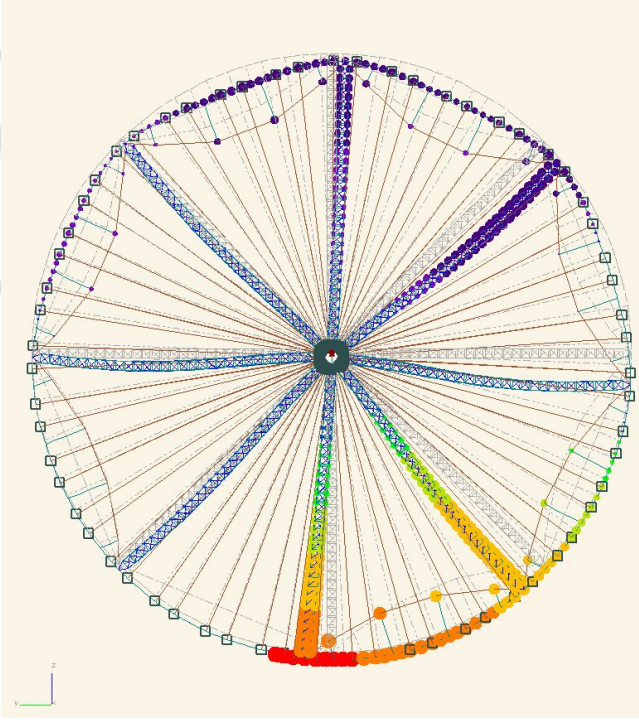
© Arup – contours of horizontal component of node deflections under dead load before completing the rim.
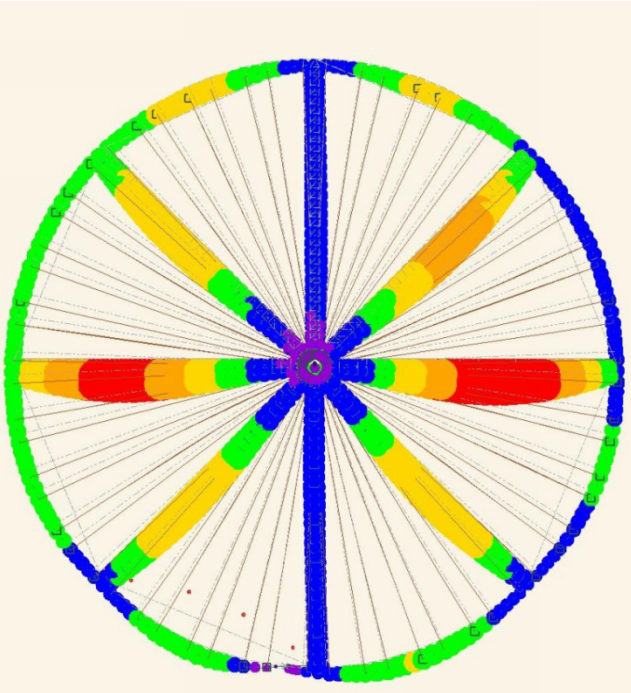
© Arup – contoured deflection under dead load with applied jacking force.
This project has inspired other similar designs and digital workflows used within Arup due to the accuracy and reliability of GSA analysis and design capabilities considering this composite structure.
We’d like to thank Associate Structural Engineer, Mary Ferguson and Senior Structural Analyst, Marc Tatarsky at Arup for sharing this work with us.
Find out more about Oasys GSA’s core capabilities here.
